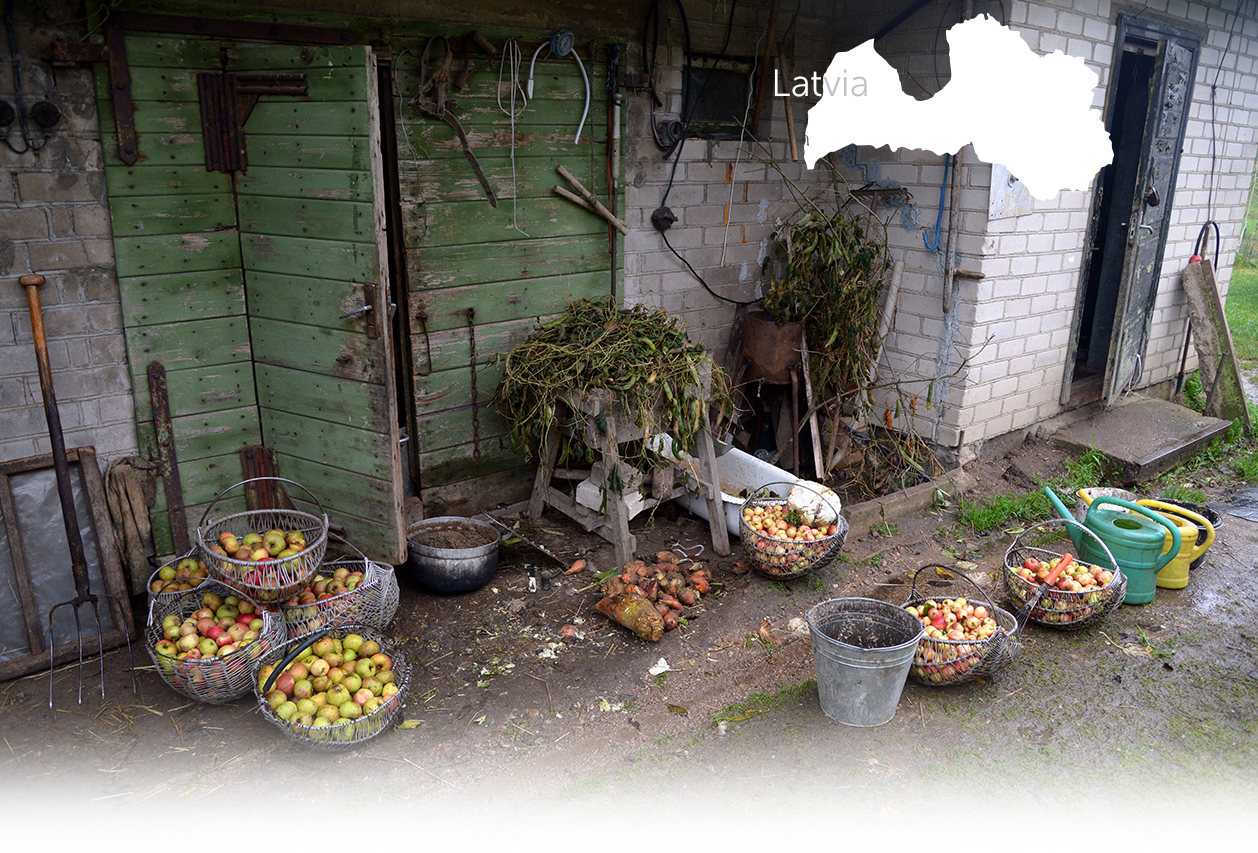

1 Killing site(s)
Tekla B., born in 1922: “I remember that one Sunday the Jews were gathered in the middle of a field near the church. They were all wearing yellow stars on their chests and backs. They were surrounded by German officers. They were then taken to Daugavpils on foot. Some elderly Jews were separated from the rest of the group and executed somewhere else. A few weeks later, I passed the site where the shooting had taken place, about 2 km from my house. I could see pits. The local population had been requisitioned to dig them.” (Witness n°22LV, interviewed in Lienmurani, on May 3, 2019)
"As soon as they arrived in the city on June 29, 1941, the Germans began to arrest the local population, especially Jews. The arrests of the Jewish population took place in two stages during the month of July. On July 25, 1941, about 200 people were rounded up and transported to Daugavpils. They were shot on the way. According to witnesses, exhausted and unable to walk, the Jews begged the guards to give them a cart. The Latvian militiamen of Group C then began shooting into the crowd, killing 18 people. Other Jews were also killed on the road to Daugavpils. At the end of July 1941, a second arrest took place. The Jews were ordered to assemble on Rezhitskaia Street. All the Jews present, about 100 people, were subjected to hard labor at the military garrison by the Germans: carrying water, washing clothes, repairing roads etc. During this time, the Jews wore a distinctive sign, a yellow star, on their chest and back. After two weeks, on the orders of the German authorities, all these Jews were shot by local policemen, including Lieutenant R***, C*** and others. According to the witness O***, the Jews were taken to the Jewish cemetery at night in four groups and shot.
The grave, which was 10x2 meters in size, was filled with bodies. The pit was guarded by local militiamen until the arrival of German officers who verified that the Jews were dead. Then they left in their cars and the pit was filled in. In order to hide their crimes, German units arrived in town in 1944. They fenced off the cemetery with a tarp and proceeded to open the pits and cremate the bodies. The cremation took several days." [Act drawn up by Soviet State Extraordinary Commission on March 30, 1945; GARF 7021-93-94; pp. 133-134]
Dagda is a small town located 68 kilometers (42 miles) east of Daugavpils, in the Latgale region of Latvia. At the beginning of the 18th century, the Latgale region was under the control of Poland. It was during this period that the hamlet of Dagda was founded. At the time, it was mainly populated by Catholics who, in 1742, built a local church. Jews began to settle there at the beginning of the 19th century when the town was part of the Russian Empire. In 1847 there were 77 Jewish residents. Their numbers grew rapidly and by 1897 they numbered 1,026, or 70% of the total population of the village. During the interwar period of the 20th century, the local Jewish community had three synagogues, a cemetery, and a school. Most of the Jews were merchants and craftsmen, but also pharmacists, doctors and dentists. In 1933, they were victims of antisemitic violence when Jewish businesses and homes were burned. Many Jews found themselves impoverished after this event. Some of them emigrated to the United States and Russia. In 1935, out of 1,104 inhabitants, 585 were Jews, or 53% of the total population. In June 1940, under the terms of the German-Soviet non-aggression pact, the Red Army entered Latvia. The Soviet authorities arrested members of the local intelligentsia and tortured priests.
On June 22, 1941, the German armies and their allies began the invasion of the USSR. Before the Germans arrived, about 60 Jews managed to flee Dagda and seek refuge in the east. Dagda was captured on June 29. From the beginning of the occupation, the German authorities formed a local militia composed of Latvians to assist the German security forces in their tasks.
On July 25, in a large field near the local church, the Germans had about 200 Jews from Dagda gathered and deported to the Daugavpils ghetto. In order to make the gathering and transportation of this group possible, the authorities requisitioned the horses and carts of local residents. On the road between Dagda and Daugavpils, Latvian militiamen executed about 20 Jews whom they deemed unable to continue. A few days later, a hundred Jews were rounded up in the center of the village. For two weeks, they were subjected to forced labor, while being ordered to wear a visible yellow star on their clothing.
In early August 1941, the German authorities had a large pit dug in the Jewish cemetery in Dagda by requisitioned local residents. Approximately 120 Jews were taken to the site by Latvian militiamen and then shot in groups in front of the grave with automatic weapons. After German officers verified that all the Jews were dead, the pit was filled in by requisitioned locals. In early 1944, in order to remove all traces of the crime, the German authorities had the bodies of the Jewish victims exhumed and burned. The process took place in the Jewish cemetery over the course of several days. Dagda was liberated by the Red Army in late July 1944. After the war, the former houses of the Jews were given to newly settled Russians.
Do you have additional information regarding a village that you would like to share with Yahad ?
Please contact us at contact@yahadinunum.org
or by calling Yahad – In Unum at +33 (0) 1 53 20 13 17